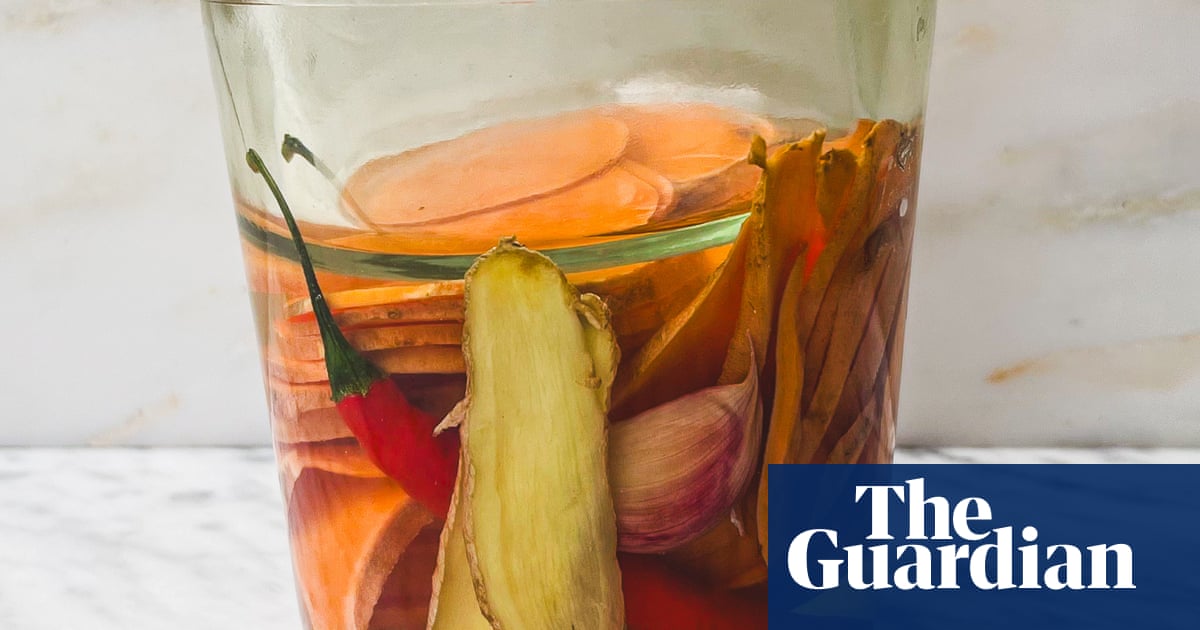I’m an avid consumer ofpickles, especially gherkins. When I’ve finisheda jar, how can I use the brine in my cooking?Geoff, SheffieldLast year,Dua Lipapoured Diet Coke into an ice-filled glass, topped it up with the brine from both a tub of pickles (plus a few rogue pickles) and a tub of jalapeños, swirled it around, then drank it. While someone underthe viral TikTok videoasked, “Dua, is everything OK?”, the pop star is right about one thing: it’s time we start thinking of pickle brine as an ingredient, rather than a byproduct.
“The brine retains all of that delicious pickle flavour,” says Moon Lee, head chef of no-waste restaurantSiloin London, “and a mixture of sweet and savoury undertones”. Also, because it’s fermented, “it has an almost tangy, kombucha-like taste, too. I’m from Korea, and we always make use of kimchi juice, whether in a dressing, as a seasoning for noodles or in pancake batter. Why can’t pickle brine have the same potential?”
Good point well made, but what does that mean in practice? “We’ve previously combined cucumber with pickle brine and cold-pressed rapeseed oil, then topped it with chopped shallots that have been marinated in salt and sugar,” Moon says; she reckons the same approach would work a treat with wild fennel, especially.
Meanwhile, pickle brine also “makes a great seasoning”, says Stuart Ralston, executive chef and owner ofAizle,Lyla,NotoandTipo, all in Edinburgh, and will put some pucker into your potatoes: “A few spoonfuls of pickle brine will make a potato salad, for example, more interesting.” Alternatively, combine 150ml each of vegetable oil and olive oil with 110ml pickle brine, 60g dijon mustard and 5g chopped fresh oregano, then “adjust the seasoning, if need be, but that won’t be far off”. Use that to dress a roast chicken, Ralston says, to serve with boiled potatoes and crisp salad leaves.
Otherwise, Ralston might use the stuff to brine a chicken – “give it a few hours to make the bird more tender and retain moisture” – while the Guardian’s own zero-waste correspondent, Tom Hunt, uses it tobrine pork chopsfor similar reasons: “Pickle juiceis brimming with flavour and salt, which is exactly what’s needed to make the most flavourful pork chop out there.” Put your chop or chops in a tub in which they’ll fit snugly, then pour over the pickle juice: “Ideally enough to submerge the chop, but even a small amount will work wonders.” Leave to marinate for three hours, and ideally overnight, then, when you’re ready to cook, “lift the chops from the brine, pat dry with a clean towel and cook using your preferred method”.
Of course, spent pickle brine can also simply be used to pickle something else, Moon says: “It’s a common fermentation technique known as ‘backslopping’. Keep a small amount of used brine and add it to a new batch to accelerate the pickling process.”
That said, if you want to channel your inner Dua Lipa and down some pickle brine, instead, Ralston reckons it’s probably best to hold the cola: “When I lived in America, I’d often have a bloody mary at brunch, and a few splashes of gherkin brine, say, really give it a kick.” That’s not a bad way to get yourself out of a pickle.
Got a culinary dilemma? Emailfeast@theguardian.com
